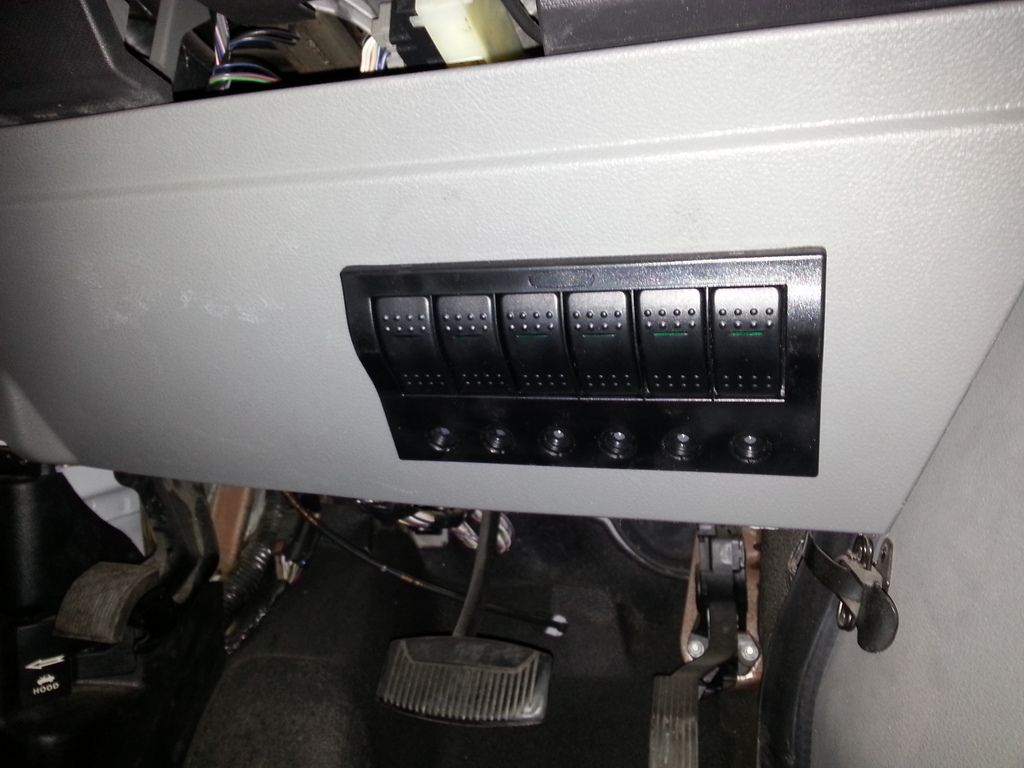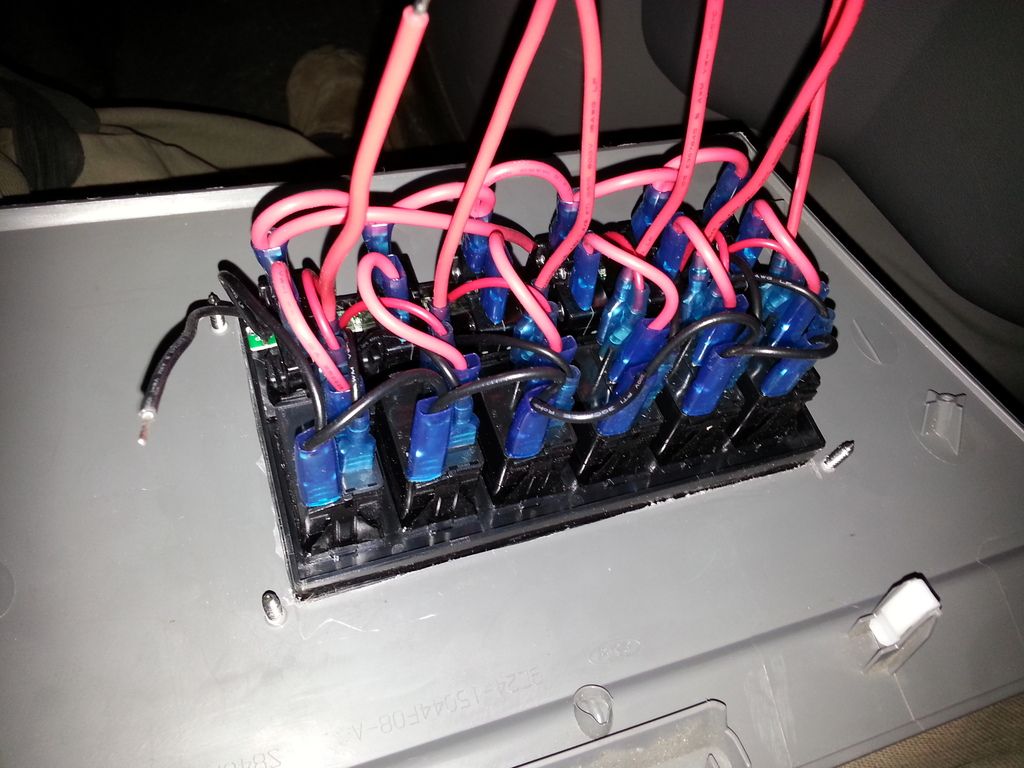evy
Apr 12, 2016Explorer
Switch panel vs campervan's 12V DC system
Hi everyone,
I'm working on my very first DIY camper conversion, using a 2010 extended Ford E250.

I've added some 27W LED lights :
4 top front, 27W x 4 = 108W/12V = 9AMP
2 lower front, 27W x 2 = 54W/12V = 4.5AMP
2 top side, 27W x 2 = 54W/12V = 4.5AMP
2 top rear, 27W x 2 = 54W/12V = 4.5AMP
(before you say anything, no I won't be using them on public roads, only in trails or at a campsite and when the van is running)
The lights are installed but I didn't wire anything yet.
I want to add them to the van's DC system but I have a couple of questions.
Instead of adding switches here and there with hidden fuses I want to add a switch panel (see pictures) somewhere easily accessible when I'm driving,
1-Do I run only two wires from the van's battery to the switch panel?
2-Do I need to add one main fuse for the whole thing?
3-These switch panels have 6 switches, as of now I only have 4 light circuits but I will probably add my rear view camera/monitor to it. so do I use the maximum wire gauge? (adding the fuse's amps)
4-If I'm correct the light inside the switch itself only lights up when you press it?
5-What kind of wire should I use on the outside, I red that Marine tinned wires are best?
6-What wire gauge? According to the internet I should be using 18 gauge wires for the 9AMP (4 top LED lights) if I have under 10' of wire, 16 gauge if I have longer.
7-What kind of connections should I do? end to end connectors with heat shrink? would that be water proof?
8-Do I need relays for each circuits?
Is there something else I should know? I've never done this before.
Thanks!




I'm working on my very first DIY camper conversion, using a 2010 extended Ford E250.

I've added some 27W LED lights :
4 top front, 27W x 4 = 108W/12V = 9AMP
2 lower front, 27W x 2 = 54W/12V = 4.5AMP
2 top side, 27W x 2 = 54W/12V = 4.5AMP
2 top rear, 27W x 2 = 54W/12V = 4.5AMP
(before you say anything, no I won't be using them on public roads, only in trails or at a campsite and when the van is running)
The lights are installed but I didn't wire anything yet.
I want to add them to the van's DC system but I have a couple of questions.
Instead of adding switches here and there with hidden fuses I want to add a switch panel (see pictures) somewhere easily accessible when I'm driving,
1-Do I run only two wires from the van's battery to the switch panel?
2-Do I need to add one main fuse for the whole thing?
3-These switch panels have 6 switches, as of now I only have 4 light circuits but I will probably add my rear view camera/monitor to it. so do I use the maximum wire gauge? (adding the fuse's amps)
4-If I'm correct the light inside the switch itself only lights up when you press it?
5-What kind of wire should I use on the outside, I red that Marine tinned wires are best?
6-What wire gauge? According to the internet I should be using 18 gauge wires for the 9AMP (4 top LED lights) if I have under 10' of wire, 16 gauge if I have longer.
7-What kind of connections should I do? end to end connectors with heat shrink? would that be water proof?
8-Do I need relays for each circuits?
Is there something else I should know? I've never done this before.
Thanks!






